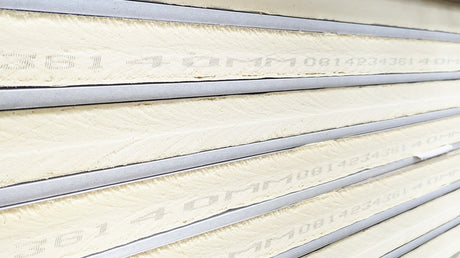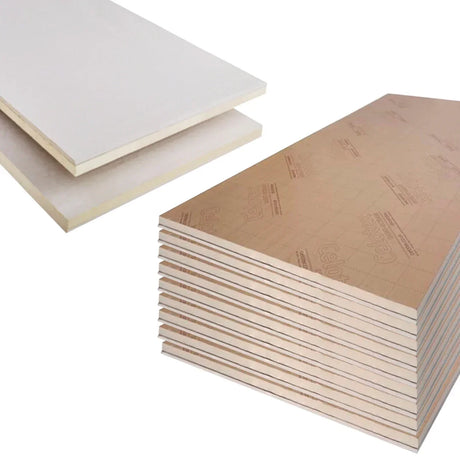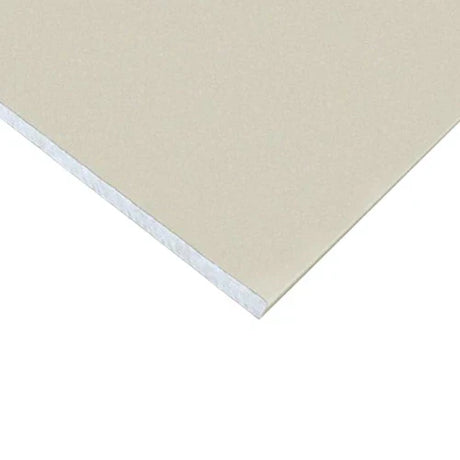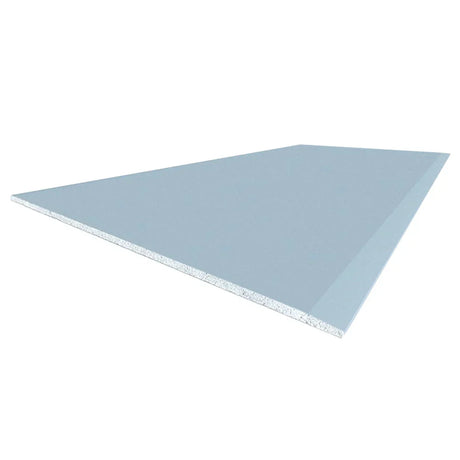Keep Your Timber Fencing Looking Great with Cuprinol, Ronseal & More
Your garden fence does more than simply mark boundaries—it's a crucial investment that enhances your property's security, privacy, and aesthetic appeal. Yet across the UK, countless homeowners watch their timber fencing deteriorate year after year, unaware that simple preventive treatments could have preserved their investment for decades. The harsh reality is that untreated timber fencing in our unpredictable British climate rarely survives more than a few years without showing significant signs of weathering, rot, or structural compromise.
At DIY Building Supplies, we've witnessed firsthand the transformation that proper fence treatment can bring. From our base in Nottingham, we've supplied timber fencing and protective treatments to thousands of customers across mainland UK, and the difference between treated and untreated fencing is nothing short of remarkable. Properly treated fences not only maintain their structural integrity but actually improve in appearance over time, developing rich patinas and enhanced grain definition that adds character to any outdoor space.
The science behind fence protection isn't complicated, but it does require understanding how different treatments work and when to apply them. Whether you're protecting a brand-new fence installation or breathing new life into existing timber, this comprehensive guide will equip you with the knowledge to make informed decisions about protecting your investment.
Why Treating Your Fence Transforms Both Performance and Appearance
The British climate presents unique challenges for outdoor timber that many homeowners underestimate. Our maritime environment subjects fencing to an almost constant cycle of moisture absorption and evaporation, temperature fluctuations that cause expansion and contraction, and UV exposure that breaks down lignin—the natural polymer that gives wood its strength and colour. Without protective treatment, these forces work relentlessly to degrade your fencing, creating the perfect conditions for rot-causing fungi, insect infestation, and structural failure.
When you invest in quality fence treatment, you're essentially creating a protective barrier that regulates moisture movement whilst allowing the timber to breathe naturally. This controlled interaction with environmental forces prevents the dramatic swelling and shrinking that causes splitting and warping. Modern treatments from leading UK manufacturers like Cuprinol and Ronseal contain sophisticated fungicides and UV inhibitors that actively combat the biological and chemical processes responsible for timber degradation.
The financial benefits of proper fence treatment extend far beyond the immediate cost savings of avoiding premature replacement. A well-maintained fence can last 15-20 years or more, compared to just 3-5 years for untreated timber in exposed conditions. This represents exceptional value for money, particularly when you consider that regular treatment costs typically amount to less than 10% of full fence replacement costs. Moreover, treated fencing maintains its aesthetic appeal throughout its lifespan, preserving your property's visual appeal and potentially contributing to long-term property values.
Perhaps most importantly, treating your fence allows you to maintain control over its appearance rather than accepting the grey, weathered look that untreated timber inevitably develops. Modern treatments offer an extraordinary range of colours and finishes, from natural wood tones that enhance grain patterns to contemporary greys and blacks that complement modern architectural styles.
Understanding the Complete Range of Fence Treatment Solutions
The world of fence treatments has evolved dramatically in recent years, with British manufacturers developing increasingly sophisticated products that address specific challenges faced by outdoor timber. Understanding these different treatment categories helps ensure you select the optimal solution for your particular fencing situation and aesthetic preferences.
Wood preservers represent the foundation of comprehensive fence protection, working at the cellular level to prevent the biological processes that cause timber decay. These treatments typically contain advanced biocides that protect against rot-causing fungi, wood-boring insects, and bacterial decay. Unlike surface coatings, preservers penetrate deep into the timber structure, creating long-lasting protection that won't wash away or wear off through normal weathering. Many professional installers apply clear preservers as a base treatment before adding decorative finishes, creating a multi-layered protection system that maximises longevity.
Modern preservers often incorporate micro-encapsulation technology that releases active ingredients gradually over time, providing sustained protection that adapts to changing environmental conditions. This sophisticated approach ensures optimal protection during the critical first few years after installation, when timber is most vulnerable to moisture penetration and biological attack.
Wood stains combine protective properties with aesthetic enhancement, offering the perfect balance for homeowners who want both performance and visual appeal. Contemporary stains utilise advanced resin systems that flex with timber movement whilst maintaining their protective seal. The latest generation of stains from manufacturers like Ronseal and Cuprinol incorporate nanotechnology that creates microscopic barriers against water penetration whilst allowing vapour transmission—essential for preventing trapped moisture that could cause internal rot.
The colour stability of modern stains has improved dramatically, with UV-stable pigments that maintain their appearance for years rather than months. These formulations resist the fading and colour shift that plagued earlier products, ensuring your fence maintains its intended appearance throughout the treatment's lifespan.
Fence paints offer the ultimate in colour choice and weather protection, creating an impermeable barrier that completely seals timber surfaces. Modern fence paints utilise flexible acrylic or alkyd resin systems that accommodate timber movement without cracking or peeling. The opacity of paint finishes provides maximum UV protection, making them ideal for south-facing fences or exposed locations where sun damage is a primary concern.
Advanced paint formulations now incorporate anti-fungal additives and moisture-regulating technology that helps prevent common problems like blistering and mould growth. Many premium fence paints also feature self-cleaning properties that maintain their appearance with minimal maintenance.
Water sealers and weatherproofers represent the most natural approach to fence protection, enhancing timber's inherent beauty whilst providing essential weather resistance. These clear or lightly tinted treatments work by reducing timber's ability to absorb moisture whilst maintaining its natural breathability. Modern sealers often incorporate wax technology that provides water-repellent properties similar to those found in naturally weather-resistant timber species.
The latest generation of weatherproofers utilises penetrating oil technology that nourishes timber fibres whilst creating protective barriers against moisture and UV damage. These treatments are particularly popular for premium hardwood fencing where maintaining natural grain patterns and colour variations is paramount.
Cuprinol: Leading Innovation in Garden Timber Protection
Cuprinol has established itself as Britain's most trusted name in garden timber protection, building on decades of innovation and an unwavering commitment to product performance. Their comprehensive range addresses every aspect of fence protection, from initial treatment of new timber through to maintenance and enhancement of existing installations. What sets Cuprinol apart is their deep understanding of British climate conditions and their commitment to developing products that perform reliably in our challenging outdoor environment.
The company's research and development efforts focus particularly on creating treatments that work effectively in high-moisture conditions—a critical consideration for UK applications. Their products undergo extensive testing in simulated British weather conditions, ensuring reliable performance when applied to real-world fencing projects. This attention to local conditions has made Cuprinol the preferred choice for both professional installers and discerning DIY enthusiasts across the UK.
Cuprinol Ducksback represents perhaps the most innovative approach to fence protection available today, combining traditional protective properties with cutting-edge wax technology. This unique formulation creates a surface that actively repels water whilst allowing timber to breathe naturally—essential for preventing the moisture-related problems that plague many outdoor timber applications. The wax-enriched formula provides five years of reliable protection in normal exposure conditions, significantly reducing maintenance requirements compared to conventional treatments.
The application properties of Ducksback have been carefully engineered for ease of use, with excellent flow characteristics that ensure even coverage without brush marks or overlap lines. The product's quick-drying properties mean that fencing can be treated efficiently even in changeable weather conditions, whilst its low-odour formulation makes it pleasant to work with in confined outdoor spaces.
Cuprinol Garden Shades revolutionises the aesthetic possibilities for garden timber, offering an extensive palette of carefully curated colours that complement contemporary garden design trends. These aren't simply coloured wood stains—they're sophisticated decorative treatments that enhance timber's natural beauty whilst providing comprehensive weather protection. The range includes everything from subtle earth tones that blend seamlessly with natural garden settings to bold contemporary colours that create striking focal points.
The durability of Garden Shades has been enhanced through the use of advanced pigment technology that resists fading and colour drift even under intense UV exposure. This means your fence maintains its intended appearance for years rather than gradually shifting towards generic grey tones. The treatments also incorporate moisture-regulating technology that helps prevent common problems like cracking and peeling whilst maintaining the natural feel of timber surfaces.
Cuprinol One Coat Sprayable addresses the practical challenges of treating large areas of fencing efficiently and effectively. This innovative formulation has been specifically developed for spray application, allowing large fence runs to be treated quickly and evenly. The fast-drying properties mean that multiple coats can be applied in a single day if required, whilst the excellent coverage rates make it an economical choice for extensive projects.
The spray-friendly characteristics don't compromise on protective performance—this treatment provides the same level of weather resistance and longevity as brush-applied alternatives. For professional installers and ambitious DIYers tackling substantial fencing projects, this represents a significant advance in both efficiency and finish quality.
Ronseal: Proven Performance and Exceptional Value
Ronseal has built its reputation on delivering reliable, high-performance treatments that combine proven protective properties with exceptional ease of application. Their approach focuses on creating products that work consistently across a wide range of conditions and timber types, making them particularly popular with both trade professionals and DIY enthusiasts who value predictable results. The company's commitment to continuous product development ensures their treatments incorporate the latest advances in protective technology whilst maintaining the practical characteristics that have made them a household name.
What distinguishes Ronseal is their focus on creating treatments that deliver professional-quality results regardless of application skill level. Their products are formulated with generous working times and forgiving application properties that help ensure consistent coverage and optimal protection. This attention to user experience has made Ronseal treatments particularly popular for DIY projects where perfect application technique might be challenging to achieve.
Ronseal One Coat Fence Life exemplifies the company's commitment to combining performance with convenience, delivering comprehensive protection in a single application under normal conditions. This formulation utilises advanced penetrating technology that drives protective ingredients deep into timber fibres, creating lasting protection that won't simply wash away during heavy rainfall. The quick-drying properties mean fencing can be treated efficiently even when weather conditions are less than ideal—a crucial advantage in our unpredictable British climate.
The coverage rates achieved by One Coat Fence Life make it an economical choice for budget-conscious projects without compromising on protective performance. The treatment provides excellent resistance to common problems like algae growth and staining, helping maintain fence appearance with minimal ongoing maintenance. Available in a carefully selected range of popular colours, it offers sufficient aesthetic choice for most garden design schemes whilst keeping the product range manageable and cost-effective.
Ronseal Fence Life Plus represents the premium end of their fence treatment range, offering enhanced durability and weather resistance for demanding applications. The five-year protection claim is backed by advanced resin technology that creates flexible, long-lasting barriers against moisture penetration and UV damage. Perhaps most impressively, the treatment becomes rainproof in just one hour under normal conditions—allowing projects to proceed even when changeable weather threatens.
The enhanced formulation includes sophisticated fungicides that provide superior protection against rot and decay, particularly important for fencing in shaded or poorly-ventilated locations where biological attack is most likely. The treatment's excellent adhesion properties ensure reliable performance even on challenging surfaces like smooth-planed timber or previously treated wood.
Ronseal Total Wood Preserver addresses the fundamental requirement for deep timber protection, utilising penetrating technology that drives protective ingredients to the heart of timber sections. This comprehensive approach provides protection against the full range of threats facing outdoor timber: rot-causing fungi, wood-boring insects, and moisture-related decay. The clear formulation allows natural timber beauty to show through whilst providing the essential protection needed for long-term performance.
The deep-penetrating action makes Total Wood Preserver particularly effective for treating cut ends and joints—the most vulnerable areas of any fence installation. Applied as a base treatment before decorative finishes, it creates a foundation of protection that dramatically extends overall system lifespan whilst ensuring consistent performance across all fence components.
Mastering Professional Application Techniques for Optimal Results
The difference between adequate fence protection and exceptional long-term performance often lies in application technique rather than product choice. Professional installers understand that proper preparation and methodical application procedures are essential for achieving the durability and appearance that quality treatments can provide. By following established best practices, DIY enthusiasts can achieve results that rival professional installations whilst ensuring their investment in protective treatments delivers maximum value.
Surface preparation represents the foundation of successful fence treatment, yet it's often rushed or overlooked entirely. Clean, dry timber accepts treatment far more readily than dirty or damp surfaces, ensuring optimal penetration and adhesion. Begin by removing any accumulated dirt, moss, or algae using a stiff brush or pressure washer set to low pressure. Allow the timber to dry completely—this may take several days in damp conditions but is essential for proper treatment adhesion.
For previously treated timber, careful assessment of existing coatings determines the appropriate preparation approach. Sound, well-adhered treatments can often be overcoated directly after light cleaning, whilst peeling or deteriorated coatings require complete removal to ensure optimal results. When in doubt, test a small, inconspicuous area to evaluate compatibility and adhesion before proceeding with full treatment.
Essential Equipment and Materials for professional-quality fence treatment includes high-quality brushes specifically designed for exterior use, with synthetic bristles that maintain their shape and cutting edge throughout extended use. Natural bristle brushes, whilst excellent for some applications, can become soggy and lose effectiveness when used with water-based treatments. For large areas, consider investing in a fence sprayer or airless spray system—these tools dramatically improve efficiency whilst often providing superior finish quality.
Protective equipment shouldn't be overlooked: dust sheets or plastic sheeting protect adjacent plants and surfaces from overspray or drips, whilst masking tape ensures clean, professional-looking edge lines. Safety equipment including gloves, eye protection, and appropriate clothing protects against splashes and vapour exposure during application.
Professional Application Methodology begins with thorough product preparation—stirring treatments completely ensures even distribution of protective ingredients and pigments throughout the container. Many modern treatments settle during storage, and inadequate mixing can result in patchy protection and colour variation. For best results, strain the treatment through a fine mesh if any lumps or foreign matter are visible.
Weather conditions play a crucial role in treatment success. Apply treatments during mild, dry conditions with moderate humidity levels—typically between 10°C and 25°C with relative humidity below 80%. Avoid application in direct sunlight on hot days, as rapid drying can prevent proper penetration and may cause brush marks or overlap lines to show in the finished surface.
Work systematically along fence sections, maintaining a wet edge to prevent overlap marks and ensuring even coverage across all surfaces. Pay particular attention to cut ends, joints, and areas where timber grain is most visible—these areas often require additional treatment to achieve optimal protection. For vertical picket fencing, work from top to bottom to allow gravity to assist with even distribution and prevent drips from marring completed sections.
The number of coats required depends on timber condition, exposure levels, and manufacturer recommendations, but two thin coats typically provide superior performance compared to a single heavy application. Allow adequate drying time between coats—rushing this process can lead to poor adhesion and premature failure. Modern treatments often specify recoat windows during which subsequent coats achieve optimal adhesion, so timing is crucial for best results.
Establishing Effective Maintenance Programmes for Long-Term Success
Even the highest-quality fence treatments require ongoing maintenance to deliver their full potential lifespan and maintain optimal appearance. Understanding when and how to carry out maintenance procedures helps ensure your investment in fence protection continues paying dividends for years to come. Professional installers have developed systematic approaches to fence maintenance that maximise treatment lifespan whilst minimising both effort and cost.
Annual Inspection Protocols form the cornerstone of effective fence maintenance, allowing early identification of potential problems before they require major intervention. Conduct thorough inspections each spring and autumn, examining both the overall condition of protective treatments and the underlying timber structure. Look particularly for signs of treatment breakdown: areas where water no longer beads on treated surfaces, colour fading or inconsistency, and any signs of biological growth such as moss or algae.
Pay special attention to vulnerable areas including post tops, horizontal rails, and any areas where vegetation comes into contact with fencing. These locations experience accelerated weathering and may require more frequent maintenance than other fence areas. Document problem areas with photographs and notes—this information helps track deterioration patterns and plan maintenance scheduling more effectively.
Check fence fixings and structural integrity during routine inspections, as loose boards or failing posts can allow moisture penetration that compromises treatment effectiveness. Address structural issues promptly to prevent localised treatment failure from spreading to adjacent areas.
Maintenance Scheduling and Treatment Refresh varies significantly depending on exposure conditions, treatment type, and local environmental factors. South-facing fences in exposed locations may require refresher treatments every two years, whilst protected north-facing installations might maintain optimal performance for four to five years. Rather than following rigid schedules, base maintenance timing on actual condition assessment combined with manufacturer guidelines.
When refresher treatments become necessary, thorough cleaning represents the most important preparation step. Remove any accumulated dirt, biological growth, or loose treatment material using appropriate cleaning methods—pressure washing, scrubbing, or chemical cleaning depending on contamination type and severity. Allow cleaned surfaces to dry completely before applying refresher treatments.
Modern refresher treatments often provide enhanced performance compared to initial applications, incorporating improved resin systems and enhanced protective ingredients. These products are specifically formulated to bond with aged treatment surfaces, revitalising protection whilst maintaining visual consistency with existing finishes.
Storage and Touch-Up Procedures ensure you're prepared for minor maintenance requirements without the expense and inconvenience of purchasing new treatment containers. Store leftover treatments in original containers with tight-fitting lids, protected from temperature extremes and moisture. Most treatments maintain effectiveness for several years when properly stored, making them ideal for routine touch-up work.
Keep detailed records of treatment specifications, application dates, and supplier information. This documentation proves invaluable when planning maintenance work or addressing warranty issues, and helps ensure colour matching when touch-up work becomes necessary.
Develop a systematic approach to minor repairs, addressing small problems promptly before they develop into major issues. Keep basic repair materials including wood filler, sandpaper, and cleaning supplies readily available, along with sufficient treatment material for routine touch-up work.
Making Informed Decisions for Your Specific Requirements
Selecting optimal fence treatment involves balancing multiple factors including budget considerations, aesthetic preferences, maintenance expectations, and specific site conditions. Understanding how these factors interact helps ensure your treatment choice delivers the performance and value you expect whilst meeting your long-term maintenance preferences.
Budget vs. Performance Considerations require careful evaluation of both initial costs and long-term value. Premium treatments typically command higher initial prices but often provide superior longevity and reduced maintenance requirements that more than offset their additional cost over time. When comparing treatment options, calculate total ownership costs including reapplication frequency and maintenance requirements rather than simply comparing purchase prices.
Consider also the labour costs associated with different treatment approaches. Products that require more frequent reapplication might seem economical initially but can become expensive when ongoing labour costs are factored into the calculation. For large fencing installations, the efficiency gains from premium, long-lasting treatments often justify their higher initial cost through reduced long-term maintenance requirements.
Aesthetic Integration with Garden Design plays an increasingly important role in treatment selection as outdoor living spaces become more sophisticated and carefully designed. Contemporary garden design often favours natural timber tones that complement planting schemes and architectural features, whilst modern minimalist approaches might specify uniform grey or charcoal finishes that create clean, uncluttered visual lines.
Consider how fence treatments will age and weather in your specific environment. Some treatments develop attractive patinas over time, whilst others maintain consistent appearance throughout their lifespan. Factor these characteristics into your selection process, particularly for highly visible fencing that forms an important part of your garden's visual appeal.
The growing popularity of sustainable garden design has increased demand for environmentally responsible treatment options. Many manufacturers now offer bio-based treatments that provide excellent performance whilst minimising environmental impact—an important consideration for environmentally conscious gardeners.
Professional Expertise You Can Trust
At DIY Building Supplies, our commitment to customer success extends far beyond simply supplying quality materials. Our experienced team combines extensive product knowledge with practical installation experience, providing the technical support needed to ensure optimal results for every project. Whether you're treating a small garden fence or protecting extensive commercial fencing installations, our expertise helps you navigate the complexities of product selection and application procedures.
Our technical advisory service addresses the specific challenges faced by customers across mainland UK, taking into account local climate conditions, soil types, and exposure factors that influence treatment performance. This personalised approach ensures recommendations are tailored to your specific situation rather than based on generic product specifications.
We maintain strong relationships with leading UK manufacturers including Cuprinol, Ronseal, and other premium brands, ensuring access to the latest product innovations and technical developments. This direct connection allows us to provide up-to-date information about product improvements, application techniques, and compatibility issues that might affect your project success.
Transform Your Fence Protection Today
Your timber fencing represents a significant investment in your property's security, privacy, and aesthetic appeal. Don't leave this investment vulnerable to the damaging effects of our unpredictable British weather. With quality treatments from trusted manufacturers like Cuprinol and Ronseal, combined with proper application techniques and maintenance procedures, your fencing can provide decades of reliable service whilst maintaining its visual appeal.
The transformation that proper fence treatment provides extends beyond simple protection—it enhances your outdoor living space whilst providing peace of mind that your investment is properly safeguarded. Whether you're protecting new installations or revitalising existing fencing, the right treatment choice makes all the difference in long-term performance and satisfaction.
Ready to protect your fence investment? Explore our comprehensive range of timber fencing, professional-grade stains, and protective treatments at DIY Building Supplies. Our expert team is ready to provide the guidance and support you need to achieve outstanding results that will protect and enhance your property for years to come.
Visit DIYBuildingSupplies.co.uk or contact our experienced team today to discuss your specific requirements and discover how our commitment to quality products and expert support can transform your fence protection project.









